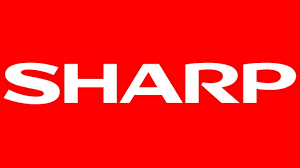Qingdao No.2 Radio Factory, the predecessor of Hisense Group, was established in September 1969;this is the year its existence was first officially recognized.The small factory's first product was a radio sold under the brand name Red Lantern, but the company later acquired the know-how to make TVs through a trial-production of black and white televisions ordered by the Shandong National Defense Office.This involved the technical training of three employees at another Chinese factory, Tianjin 712, and resulted in the production of 82 televisions by 1971 and the development of transistor TVs by 1975.Their first TV model, CJD18 was produced in 1978.
Television production in China was limited until 1979, when a meeting of the Ministry of Electronics in Beijing concluded with calls for greater development of the civil-use electronics industry.Qingdao No.2 Radio Factory was then quickly merged with other local electronics makers and began to manufacture televisions under the name Qingdao General Television Factoryin Shandong province.
Color televisions were manufactured through the purchase of a production line from Matsushita,the first of many such technology transfers from foreign firms Hisense has made in order to remain competitive. The companies it has bought from include Hitachi, Lucent, Matsushita, NEC, Sanyo, Toshiba, and Qualcomm.
The Hisense Group emerged in 1994 from a tumult started in 1992 by then-president Zhou Houjian[13] or perhaps even by Li Dezhen, director of the Electronic Instrument Bureau of Qingdao.The Hisense Electrical Appliance Share Holding Company (now, Hisense Electrical Co Ltd) was publicly listed on the Shanghai Stock Exchange in April 1997.[Bell 2] Increased competition and price wars in the Chinese electronics market in the 1990s were a boon to Hisense, which acquired ten failing enterprises by 1998.
Eager to expand beyond consumer electronics, Hisense Group aimed to also become a regional leader in household appliances, computers and communications.This strategy prompted great outlays of capital on R&D and on the creation of industrial parks, etc.
In 2013, Hisense invented a type of transparent 3D television.
In July 2015, Hisense bought a Mexico facility from Sharp for $23.7 million alongside rights to use the Sharp brand on televisions sold in North and South America.
In November 2017, Hisense announced that it would acquire a 95% controlling stake in Toshiba Visual Solutions for US$113 million.In 2018, Hisense became the majority shareholder in Slovenian appliance manufacturer Gorenje with 95.4% of shares.
In 2020, it introduced the world's first true 8K 10 bit HDR screen TV that is based on an AI-powered HDR algorithm and an image quality engine claiming 6.5T supercomputing power.
In May 2022, Hisense announced the launch of the company’s first 4K Fire TV. The TV has a 50-inch 60Hz display with a bezel-less design. It uses Hisense’s ULED technology and comes with support for Dolby vision HDR with Fire TV built in.





















































































